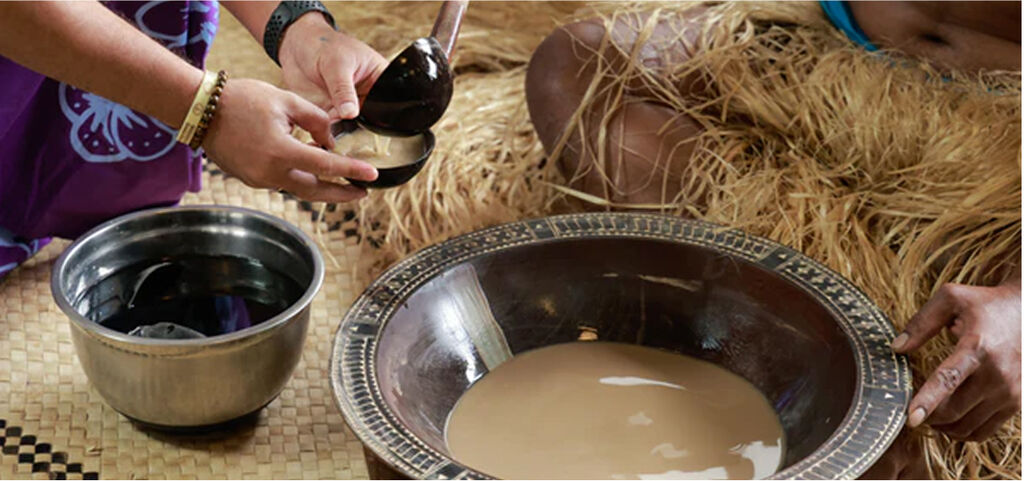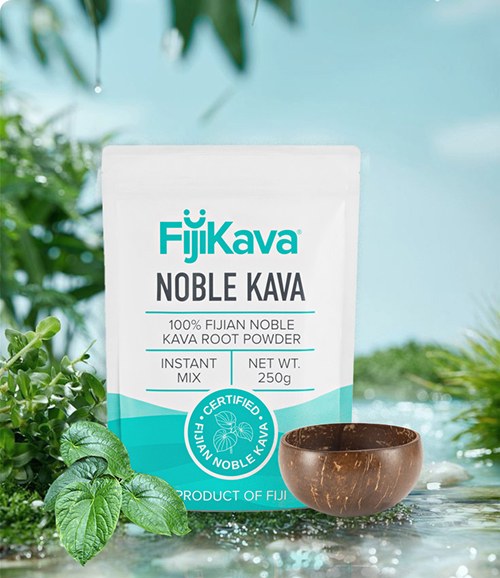Kava plants
Kava comes in various strains and grades, each offering unique effects. Find out more about each strain below.
ABOUT
Kava root that has been dried after harvesting, usually for preservation, easier transportation & later use.
ABOUT
Kava root in its natural, freshly-harvested state.
ABOUT
Refers to the kava plant's stump. While Lewena itself isn't a classification of kava's effects, it's often associated with Noble varieties when it comes to its quality.
ABOUT
A broad classification for kava strains associated with a pleasant experience.
ABOUT
This kava strain has a strong effect and potential next-day "hangover," It's less frequently used than Noble varieties and isn't recommended for regular consumption.
ABOUT
The lateral roots of the kava plant known for its potency. Waka itself isn't a classification of kava's effects, but when harvested from Noble strains, it maintains the Noble classification.
The cultural significance of kava spans multiple Pacific societies. The list below covers aspects of kava-related traditions and ceremonies.
LANGUAGE
A Fijian term of greeting, also associated with kava culture.
LANGUAGE
A common term used in the Pacific Islands for a drink made from kava root powder mixed with water.
CULTURAL TRADITION
Traditional event in which kava is prepared and consumed, fostering communal ties.
CULTURAL TRADITION
Traditional dance performed during kava ceremonies.
CULTURAL TRADITION
Designated moments when kava is traditionally consumed.
CULTURAL TRADITION
A traditional offering given, usually kava, as a gesture of respect or to seek permission

Preparing kava is an art, blending tradition with innovation. This list covers various tools and methods used in kava preparation.
EQUIPMENT
A traditional cup made from a coconut shell used for drinking kava in many Pacific Island cultures.
EQUIPMENT
A large wooden bowl used in thepreparation and presentation of kava.
TRADITIONAL PREPARATION
The manual process of extracting kava by massaging the root or powder in water.
TRADITIONAL PREPARATION
The process of separating the liquid kava drink from the root material.
MODERNISATION
Finely ground kava that can be mixed directly with water, without needing straining.
The chemistry makeup of kava
Kava's effects come from its unique chemical makeup. This section breaks down the primary compounds found in kava and their significance.
TERMINOLOGY
The chemical profile of a plant, including the types and ratios of compounds it contains. Kava varieties are often classified by their chemotype.
KAVALACTONES
One of the six main kavalactones with potential euphoric effects.
KAVALACTONES
One of the six primary kavalactones known for its sedative properties.
KAVALACTONES
A kavalactone that may have sedative and analgesic effects.
PROCESSING
A group of chalcones found in kava, heavily in Tudei Kava species, currently being researched for their biological activities.
TERMINOLOGY
Gamma-aminobutyric acid, a neurotransmitter that inhibits the activity of nerve cells in the brain. Kavalactones are thought to affect GABA receptors, which may explain some of its calming effects.
TERMINOLOGY
A technique used in analytical chemistry to separate, identify and quantify each component in a mixture.
KAVALACTONES
A prominent kavalactone often associated with kava's euphoric effects.
TERMINOLOGY
A class of bioactive lactone compounds primarily responsible for the effects of kava.
KAVALACTONES
A major kavalactone that might contribute to mood-enhancing effects.
KAVALACTONES
One of the six principal kavalactones with potential psychoactive effects.
This guide and manual to the world of kava is here to support you as you continue on your kava journey. If you think we missed anything or have any questions, please do not hesitate to let us know.
Now that you're well-versed in the language of kava, why not explore FijiKava's range of premium kava products? Click below to discover the best that the Pacific Islands have to offer.
This information is not intended as a substitute for advice provided by a competent health care professional. You should not use this information in diagnosing or treating a health problem. No claim or opinion in this email is intended to be, nor should be construed to be, medical advice. If you are now taking any drugs, prescribed or not, or have a medical condition, please consult a competent physician who is aware of herb/drug interactions before taking any herbal supplements. The information presented herein has not been evaluated by the FDA or the Department of Health and is not intended to diagnose, prevent or treat any disease or illness.

